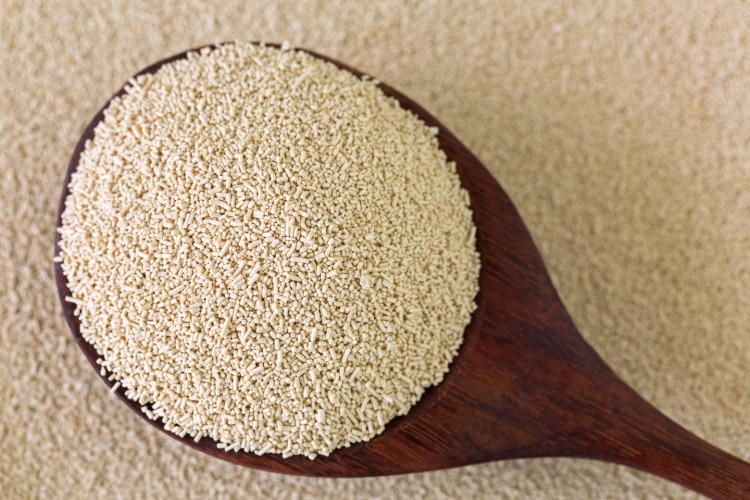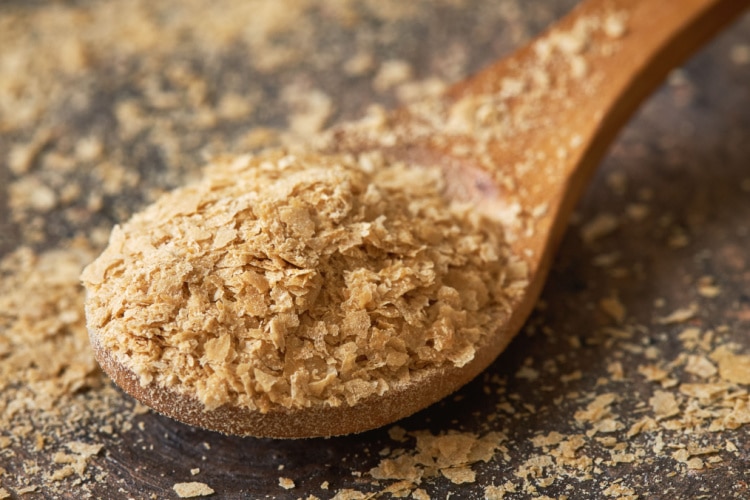Active dry yeast and brewer’s yeast are the two primary forms of yeast used in cooking — one’s for the fans of beer, and the other is for lovers of baked goods.
Which one is for what, then?
The two have a similar strain, but there are several key distinctions that you should be aware of before using either one! If not, you might end up with beer instead of bread dough! We’re just joking (or not) – let’s spill the tea (or beer) and learn about their differences.
Difference Between Active Dry Yeast and Brewer’s Yeast
The main difference between active dry yeast and brewer’s yeast is their usage: active dry yeast is used for making bread, whereas brewer’s yeast is used for making beer and wine.
To better understand their function, let’s first grasp the nature of yeast. Yeast is a microbial organism from the fungus kingdom that excretes alcohol and carbon dioxide. Both active dry and brewer’s yeast come from the Saccharomyces cerevisiae single-celled fungus.

Active dry yeast is high in carbon dioxide and low in alcohol content. Carbon dioxide gets activated by the starch content present in flour and helps the bread dough rise. As for the alcohol, it evaporates during baking. Without active dry yeast, finished baked goods won’t have the fluffy and airy texture we all love.

The brewer’s yeast generates significantly higher volumes of alcohol and carbon dioxide. Both are essential for making a beverage alcoholic, and they accomplish this by turning the grain’s sugars into alcohol.
Being a slow-rising yeast, the brewer’s yeast needs ample time to flourish and generate the necessary level of alcohol. During the fermentation process, brewer’s yeast makes bubbles. Once the surface of the beverage-in-progress is bubble-free, the fermentation process is complete. Typically, it takes around three weeks for wine to ferment and about two weeks for beer.
What Do They Taste Like?
The flavor of active dry yeast is nutty and wheat-like. When used in baked goods in proper amounts, the yeasty flavor is mild and unnoticeable. Beer will have a very faint and unappealing flavor if active dry yeast is employed during fermentation.
On the other hand, brewer’s yeast has a very bitter flavor, which is the trademark flavor of beers. Brewer’s yeast will produce bitter bread when used in baking. However, some people may find the flavor bearable.
That said, brewer’s yeast will unquestionably sabotage your dessert if utilized in cakes or cookies. Cooks advise mixing in additional sweet ingredients, such as honey or simple syrup, to mask the bitterness.
What Is Their Shelf Life?
As soon as active dry yeast and brewer’s yeast are produced and packaged for commercial use, their shelf life begins.
Active dry yeast undergoes a process of drying out, which contributes to having a longer shelf life. In general, unopened dry yeast will stay active for around two years. Once opened, dry yeast will last four months in the refrigerator and six months in the freezer.
Brewer’s yeast doesn’t last as long as active dry yeast because it contains more moisture. Fresh brewer’s yeast must be kept in the refrigerator, and even then, it will last for 6 to 10 days.
What Are Their Varieties?
There is just one type of active dry yeast and no further variations. On the other hand, there are two primary types of brewer’s yeast:
- Ale yeast: known as “top-fermenting yeast” because it ascends to the top during fermentation. This yeast ferments between 10 and 25 °C (50 and 77°F), most frequently between 18 and 22 °C (64 and 71°F)
- Lager yeast: known as “bottom-fermenting yeast” because it ferments near the fermenter’s bottom. Lager yeast functions better in cooler environments than ale yeasts, often at temperatures between 7 and 15°C (44 and 59°F)
Active Dry Yeast vs Brewers Yeast Comparison Table
| Category | Active Dry Yeast | Brewer’s Yeast |
| Type of strain | Saccharomyces cerevisiae single-celled fungus | Saccharomyces cerevisiae single-celled fungus |
| Byproducts | High levels of Carbon dioxide and low levels of alcohol | High levels of both Carbon dioxide and alcohol |
| Type | Fast-acting | Slow-acting |
| Uses | For making bread | For fermenting beer or wine |
| Flavor | Nutty, wheat-like | Bitter |
| Moisture content | Low moisture content | High moisture content |
| Shelf life | Unopened: 2 years Opened & refrigerated: 4 months Opened & frozen: 6 months | 6 to 10 days in the fridge |
| Varieties | No varieties | Ale “top-fermenting” yeast Lager “bottom-fermenting” yeast |
Nutritional Content Breakdown: Which One Is Healthier?
Brewer’s yeast is far healthier than active dry yeast, as seen in the nutritional chart below. It has fewer calories, carbohydrates, fat, and salt. Additionally, it has more calcium and iron than active dry yeast. The fiber and sugar content are the only factors that make active dry yeast superior to brewer’s yeast.
Fun fact regarding health: Besides being used to make alcoholic beverages, brewer’s yeast is a powerful nutritional supplement used throughout history! It positively affects every part of our body, including the neurological system, skin, hair, and eyes. It keeps one’s weight in check and their energy levels up.
As it aids in lowering cholesterol and blood sugar, it is strongly advised for those who have diabetes. This supplement also has positive effects on the liver.
Active Dry Yeast vs Brewers Yeast: Nutritional Profile
| Category (2 tbsp) | Active Dry Yeast | Brewer’s Yeast |
| Calories | 78 | 60 |
| Carbs | 9.9g | 7g |
| Fat | 1.8g | 0.5g |
| Sodium | 12.2mg | 3mg |
| Protein | 9.7g | 7g |
| Fiber | 6.5g | 4g |
| Sugar | 0g | 0.5g |
| Vitamins & Minerals | ||
| Calcium | 7.2mg | 40mg |
| Iron | 0.5mg | 1.1mg |
Can I Substitute Active Dry Yeast for Brewers Yeast and Vice Versa?
Yes, you can absolutely substitute active dry yeast for brewer’s yeast and vice versa. Just be sure to replace them with the appropriate quantity.
Let’s start with baking. For starters, make sure to use ale brewer’s yeast since the other varieties (like lager yeast) take too long to produce carbon dioxide.
Active dry yeast is more potent, so you need to add more brewer’s yeast to get similar results. For example, for 1/2 oz of active dry yeast, substitute 1 oz of brewer’s yeast.
When baking with brewer’s yeast, you need to consider the flavor as well. Brewer’s yeast tastes a bit harsh, so your bread or other baked goods will taste a little bit bitter.
As for making beer, using active dry yeast to produce beer wouldn’t give it the unique flavor we all adore because active dry yeast isn’t as bitter as brewer’s yeast.
Regarding the ratio, you’ll need around 11g of baker’s yeast per 5 gal (23l) drum fermenter. Bread yeast typically ferments beer with around 8% to 10% alcohol content.
Conclusion
This concludes our chapter on yeast varieties!
It turns out that Saccharomyces cerevisiae is the parent of both brewer’s yeast and active dry yeast. Brewer’s yeast is a leading choice for making alcohol, whereas active dry yeast is used for making bread dough.
Both have nutritional benefits, however only brewer’s yeast is used as a natural super-nutritious supplement!
Although you may use both interchangeably, remember that you might need to vary the ratio to get the same effects from both!
Which one, though, is best for you? We really hope that this post helped you better comprehend your desired culinary goal!







